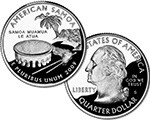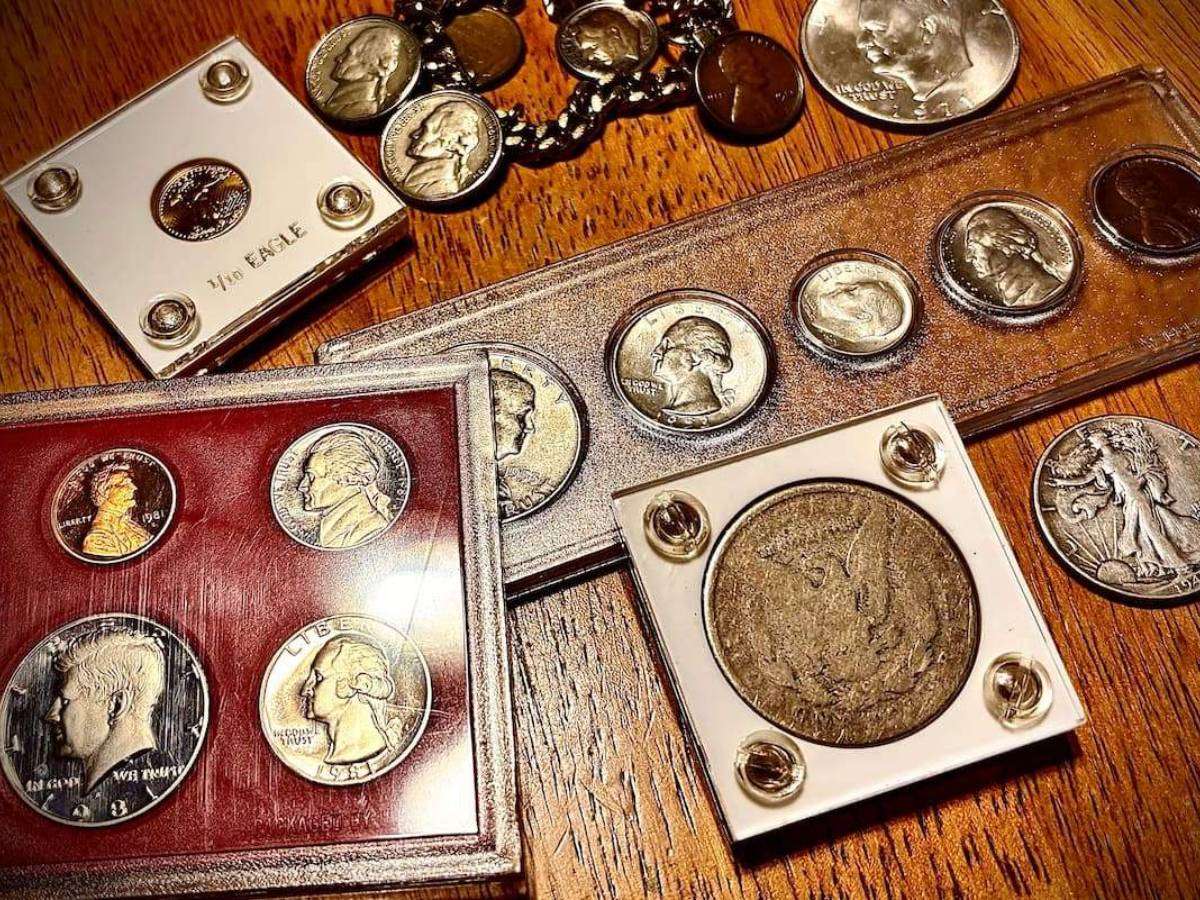 The 4th coin in the DC & U.S. Territories Quarter series, the American Samoa quarter, was released in July 2009.
The 4th coin in the DC & U.S. Territories Quarter series, the American Samoa quarter, was released in July 2009.
“D” (Denver-minted) coins hit the western half of the nation first, and then “P” (Philadelphia-minted) quarters turned up across the eastern half of the U.S.
This coin honors the beautiful Pacific U.S. territory.
American Samoa Quarter Design
The American Samoa quarter honors the territory’s rich cultural and social background, and the coin’s design reflects this.
On the reverse (tail’s side) is the image of a shoreline representative of American Samoa’s beautiful Pacific shorelines. They are an essential aspect of the 5 islands and 2 atolls which form the territory.
Also sharing a spot on the coin’s reverse are an ava bowl, a fly whisk, and a staff, all of which are elemental and symbolic to traditional Samoan gatherings and events.
Inscribed on the coin is the motto “SAMOA MUAMUA LE ATUA” (“Samoa, God is First”). Other inscriptions include “In God We Trust,” and “E Pluribus Unum” (Latin for “Out of Many, One”).
On the obverse (head’s side) of the American Samoa quarter is the same image of George Washington which has been featured on the 50 State Quarters (1999-2008) and the other 2009 D.C. & U.S Territories Quarters.
Stephen Clark, who is a designer in the U.S. Mint’s Artistic Infusion Program, designed the reverse of the American Samoa quarter. Charles Vickers sculpted the design for the coin.
American Samoa Quarter Values & Errors
Unless any special errors arise, the American Samoa quarter is and will remain a common coin.
There have been no major reports of any American Samoa quarter errors. However, while in circulation, there are plenty of chances for a keen eye to discover a significant error. Quarters with die cracks and filled dies, for example, could turn up and result in “error” American Samoa quarters worth more than usual values.
Circulated examples are worth face value. Therefore, if you find an American Samoa quarter in your pocket change, it will be worth only 25 cents.
Uncirculated examples of such coins tend to sell for a markup of approximately 3 to 5 times face value, depending on demand.




